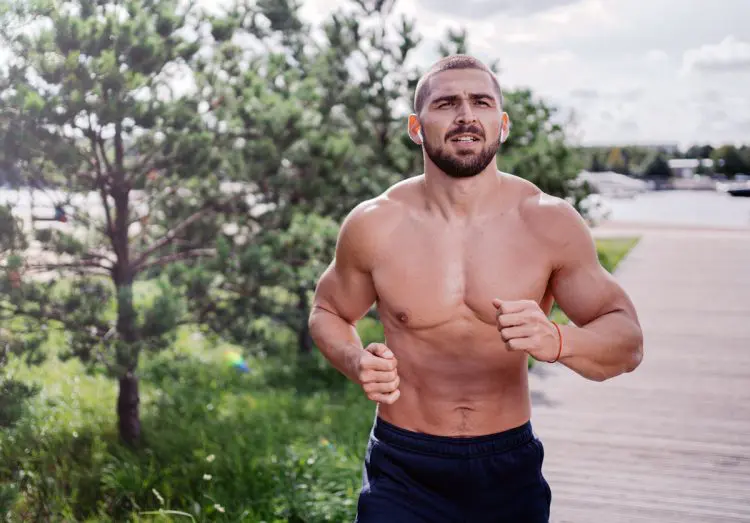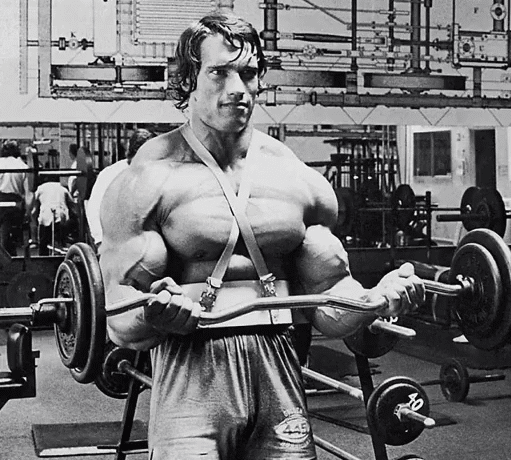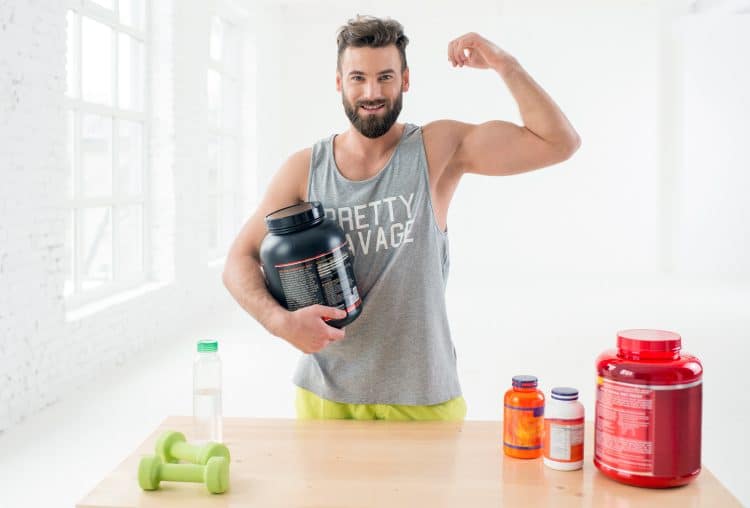Bicep veins are like jewelry for your arms. Everybody wants them, but not everyone can afford them. A visible cephalic vein is considered a fitness gold standard. An individual with a visible bicep vein is usually considered fit AF.
You know you want it. We know you want it. Heck, even the janitor at your gym knows you want that beautiful bicep piping. So, stop pretending like you don’t.
Apart from looking sick on their own, visible veins make surrounding skin look thin, making you look shredded to the bone.
We have heard dozens of stories from our friendly neighborhood brofessors about how to get a cephalic vein, but none of them hold water IRL.
I need to take it easy with these abbreviations, but I digress.
The lifters who tell you to do more curls to make your bicep vein more pronounced are the people who put bro in broscience. You would be better off staying away from these people.
Level Up Your Fitness: Join our 💪 strong community in Fitness Volt Newsletter. Get daily inspiration, expert-backed workouts, nutrition tips, the latest in strength sports, and the support you need to reach your goals. Subscribe for free!
Everything You Need To Know About the Bicep Vein
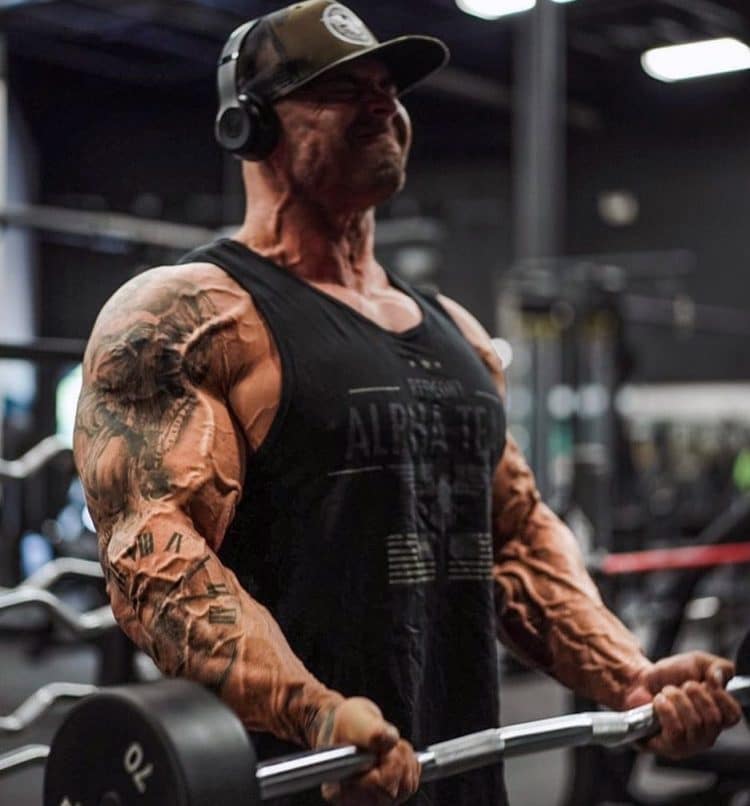
The cephalic (bicep) vein is the one placed on the outer portion of your bicep when your palms are facing forward.
Many people make the mistake of wondering if they can ever get a bicep vein. The thing is, everyone has a cephalic vein. It is just located differently in different people.
The cephalic vein might be a little to the left or right in different people, and some people’s bicep veins might have a different shape to them. If you think that all bicep veins look like a straight line running down your arm, you probably have not heard of Frank McGrath.
The bicep vein is a superficial vein. Meaning – it is on the outer surface of the bicep muscle and is closer to the skin. It is why the cephalic vein is more visible as compared to veins that run beneath and through your bicep.
Bicep veins are a result of your vascularity, leanness, and genetics. Some people naturally have translucent skin that makes their veins more visible, especially if they working out.
People who were not so lucky in the genes lottery have to work extra hard and manipulate their diet and workouts to achieve the peeled look.
How To Get The Bicep Vein
As we have discussed, everyone has a bicep vein, it is just a matter of figuring out how to reveal it. Everyone has a different body structure and composition and might need to deploy different strategies to make their cephalic vein more prominent.
Here are some of the best ways of building vascularity in your arms:
1. Eat Right
From an anatomical standpoint, this is how your body is set up – bone, muscle, veins, fat, skin. If you have excessive body fat surrounding your veins, they will not be visible through your skin.
Your bicep vein is a lot like your abs. You will never have a pronounced cephalic vein until you get your body fat percentage under control. So, how much body fat should you have to reveal those bicep pipes? Here is a rundown on vascularity stages based on your body fat percentage:
- 15%+: Very little to no vascularity.
- 12%-15%: Your arm vascularity will start to appear.
- 10%-12%: You will be noticeably vascular.
- 8%-10%: Vasuclairy in your arms and shoulders, with or without a pump.
- <8%: You are shredded!
Remember: This is an overview. Your genetics play a big role in your vascularity. For example, John Cena might look peeled at 12% body fat, but Roman Reigns might need to get down to 10% body fat to achieve the same look. I have no idea why I used the example of WWE stars, but I keep digressing, God!
Foods to Improve Your Vascularity
Here are a few high-protein, low-carb, and low-fat foods that will help in your bicep vein-popping journey:
- Meats: Turkey, chicken breast, lean beef, and pork tenderloin
- Dairy products: Greek yogurt, cottage cheese, and milk
- Beans and legumes: Soybeans, chickpeas, and edamame
Tip: Find your daily protein intake
However, if you are lean but do not have a prominent bicep vein, you should eat sodium-rich food and bump your carb intake. But keep in mind, this could be a double-edged sword.
If you are not already lean and have a high body fat percentage, eating a high sodium and carb diet might cause you to hold water and look softer. Exactly the opposite of what we are trying to do.
Related: Our List Of 40 Great Protein-Packed Foods
2. Incorporate Cardio in Your Training Routine
Including cardio in your fitness routine helps build muscular and cardiovascular strength, endurance, and stamina, lose excess weight and boost blood circulation.
Staying on a calorie deficit (expending more calories in a day than you consume) can help reduce your overall body fat. It can also aid in making your veins more prominent if you already have a low body fat percentage.
On top of that, as you develop your cardiovascular capacity, your body creates a more efficient structure of veins and arteries to deliver oxygenated blood to your working muscles, making you veinier.
Instead of hitting the treadmill for long stretches, focus on HIIT training. Long cardio sessions can cause a loss of muscle, effectively increasing the gap between your cephalic vein and skin.
So, instead of a 30-minute session on the rowing machine, try a Tabata workout consisting of burpees, mountain climbers, skaters, and jumping lunges. Rest one minute after each full Tabata, and repeat five to six times.
Next Read: What Is Muscular Endurance and Exercises To Improve It
3. Weight Train for Size
Since the bicep vein is a superficial vein, you could utilize resistance training to make it pop. Lifting weights helps build muscle mass on your arms which can reduce the distance between your skin and the bicep muscle, pushing the cephalic vein through your skin as a result.
If your goal is to look veiny, your best bet would be to follow a high-intensity workout program.
Level Up Your Fitness: Join our 💪 strong community in Fitness Volt Newsletter. Get daily inspiration, expert-backed workouts, nutrition tips, the latest in strength sports, and the support you need to reach your goals. Subscribe for free!
To build muscle and improve your vascularity, you need to use heavy weights, perform a higher number of reps, and keep rest durations between sets short.
Focus on achieving muscular hypertrophy by performing 8 to 12 reps for every set, with no more than 30-seconds rest between exercises. This will trigger massive muscle pumps, tax the vascular system, and increase lactic acid in your muscles. Hypertrophy is an incredibly effective way of increasing vascular density.
Remember: Do not limit your bicep training to dumbbell bicep curls. Your biceps are used in almost every upper body movement. Compound lifts can help add size to your arms, pushing your bicep vein and muscle closer to the overlaying skin layer.
However, if your primary goal is to build vascular arms, at least 50% of your arm workout should consist of isolation movements.
Using different grips can also help take your python gains to the next level. At the same time, exercises where grip is a limiting factor, such as pull-ups or farmer’s walks, are a trigger for the vascular system of the arms. To conclude, more is less when it comes to making your cephalic vein pop.
Related: How to Burn Fat with Strength Training
4. The Pump is Your Best Friend
Bodybuilders are basically “pump chasers.”
Arnold summed it up the best when he said,
“The greatest feeling you can get in a gym or the most satisfying feeling you can get in the gym is the pump. Let’s say you train your biceps, blood is rushing into your muscles and that’s what we call the pump. Your muscles get a really tight feeling like your skin is going to explode any minute and it’s really tight and it’s like someone is blowing air into your muscle and it just blows up and it feels different, it feels fantastic. It’s as satisfying to me as cumming is, you know, as in having sex with a woman and cumming.
So can you believe how much I am in heaven? I am like getting the feeling of cumming in the gym; I’m getting the feeling of cumming at home; I’m getting the feeling of cumming backstage; when I pump up when I pose out in front of 5000 people I get the same feeling, so I am cumming day and night. It’s terrific, right? So you know, I am in heaven.”
Not that he ever spoke about it, but cumming chasing the pump could be the secret behind Arnie’s garden hose-like bicep veins.
A muscle pump floods the biceps with blood and can have anabolic and anti-catabolic effects on your muscles.
Next Read: Anabolic Vs. Catabolic Metabolism – Definitions and How They Affect You
5. Shave Your Arms
Have you ever wondered why we do not see pro bodybuilders posing on stage with body hair? Body hair, even a little, can negatively impact your muscular and vascular definition. So, clean up, Chewbacca.
6. Supplements
Using supplements is one of the most effective ways of improving your vascularity. Supplements like L-arginine and L-citrulline malate are compounds that turn into nitric oxide as soon as they hit your bloodstream.
Hydromax glycerol, taurine, and nitrosigine are other compounds that can help boost your vascularity. Using a pre-workout supplement that contains some of these compounds can make the veins on your arms resemble a road map. But remember, supplements do not work until you do.
If you are not a fan of supplements, here is a list of foods that help increase the amount of nitric oxide in the blood:
Check-Out: The 15 Best Pre-Workout Supplements of 2024 Reviewed & Ranked
Pro tip: Asking the jacked brofessor at your gym about his veins is probably not the best idea. You might end up walking out of the gym with a bottle of god-knows-what in your bag. So, stay in school, and say no to drugs.
7. Pro Max Tip
So, you want your bicep vein to pop, and you want that quick?
You have come to the right place.
We have formulated a perfect compound using diana… No, we’re just kidding.
But there certainly is a way to supercharge your vascularity ambitions. We need to warn you, though. This tip is not for the faint of heart. Do not try this if you cannot handle soreness for a couple of days.
Now that the disclaimer is out of the way, grab a syringe and… No, we are just playing with you.
Without any further ado, here is how you can make your cephalic vein pop:
Blood Flow Restriction Training
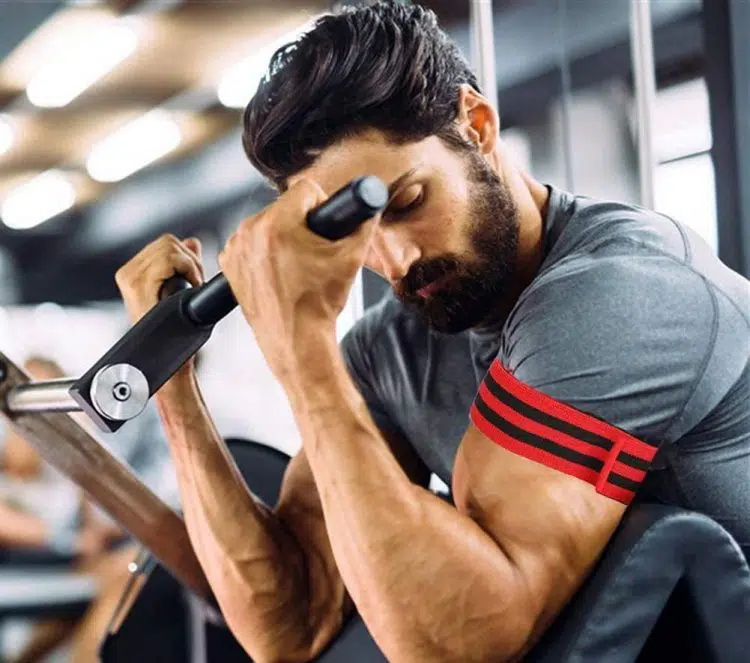
Since we have already spoken about the importance of muscle pumps and the need to flush your pythons with as much blood as possible to make the bicep vein pop, BFR (blood flow restriction) training is the logical next step.
BFR training improves your vascularity and allows you to build more strength while using lighter loads. While BFR training, you will only need to use 20-30% of your normal weight to achieve optimal muscle fiber recruitment.
Bicep BFR tips:
- Tie a BFR cuff around just below your shoulder at the top of your upper arm. The wrap should be nestling into your armpit.
- Some people make the mistake of tying the cuff too tight. You want to wrap at about a 7 out of 10 on the tightness scale (10 being as tight as possible).
- You should not feel any numbness or tingling sensation while performing a bicep exercise. If you do, you need to loosen the cuffs a little.
- Wrapping the cuffs too tight restricts arterial flow and prevents blood from pooling in the muscle, defeating the whole purpose of the exercise.
Related: The Science of Blood Flow Restriction (BFR) Training
Wrapping Up
When you use the methods described above, you will notice an overall improvement in your vascularity. You will see veins popping out your biceps, forearms, and deltoids.
However, improving vascularity is easier said than done. You will have to be consistent and persistent in your quest for the bicep vein. It might take some time, but the results will be worth it, we promise.


